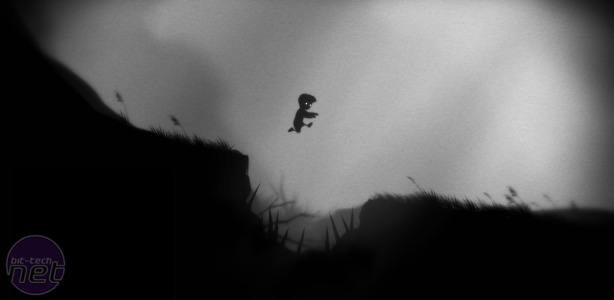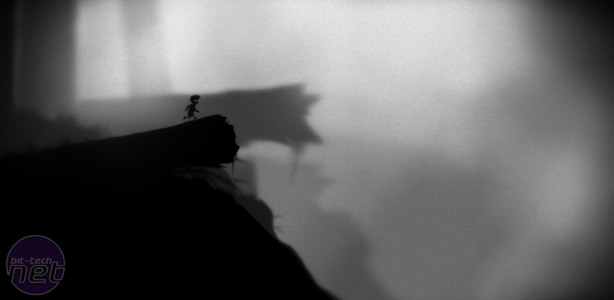Limbo Review
Platform: Xbox Live ArcadePublisher: Microsoft
Price (as reviewed): 1200 MS Points (around £10/$15)
I have been thinking about death recently, as the anniversaries of long gone people approach; perhaps this is why I found Limbo so affecting. When we think about death, we tend to think about it from the point of view of those of us left behind in the world of the living – how hard it is to be left behind, with only goneness to keep us company.
Creative responses to death frequently invert this perspective, and some of humanity’s oldest plot ideas – trips to the underworld, ghosts, resurrections and people given one last chance – are narrative methods to help the living cross, temporarily, the line between life and death for the one last word, kiss or answer that reality denied them.
Death is problematic for games; as I’ve written in a blog post previously, in games killing is fun because killing people/aliens/baddies is how you actually progress through the level. The enemies aren’t people with lives – they’re obstacles to your progress. This makes it difficult for games to make the player engage with death and mortality as part of the story: when you’re riding a crest of digital blood it’s hard to care about one more fatality, even if a tonne of CGI sequences try and weight it with meaning.
I’ve never played a game that engages with death quite as viscerally and tenderly as Limbo. The launch title for Microsoft’s 2010 Summer of Arcade line-up of new downloadable games for the Xbox 360, Limbo is a distinctive and memorable platform game. It’s visually innovative, emotionally engaging and has one of the most brilliant opening sequences since Half-Life 2.
It’s also the kind of 'artistic' game that could easily drown under critical praise, while being ignored by the general gaming public for being expensive, short and completely lacking in laser guns, chainsaws, aliens, boobs or recognisable franchise characters.
If you read enough about Limbo you’ll find people saying there’s a story involving you hunting for your sister. This is rubbish: the only story involved in the game is the title. There are no cut-scenes, there’s no dialogue and Bob Exposition doesn’t show up to tell you your name and remind you that you need to press A to shoot.
While it seems safe to assume you are in Limbo, you are free to wonder who the boy you control is – is he himself dead? A trapped visitor? – And your only real aim is to move from left to right, onwards. It starts as it means to go on: with black and white graphics, drawn as if using charcoals and watercolour, covered in old film fuzz, as if you’re watching something from the silent film era. In the middle of the screen is a pitch black boy with bright white eyes, who blinks sometimes.
You can walk, run and jump. At first, it's a gentle wander through a somber forest, gravel crunching underfoot, until you walk into a bear trap and it slices your head off and you leap off the sofa. The boy’s body falls, slow and lifeless, into the grass.

MSI MPG Velox 100R Chassis Review
October 14 2021 | 15:04












Want to comment? Please log in.